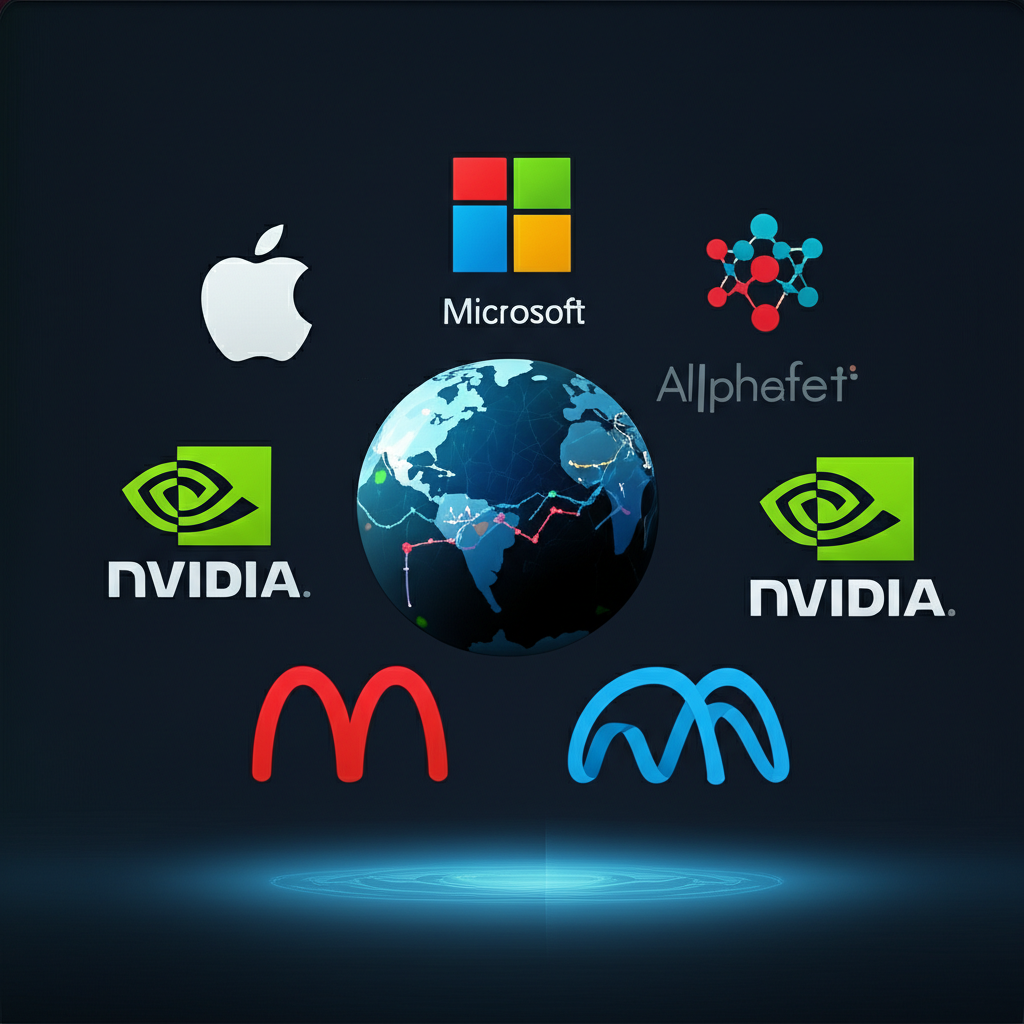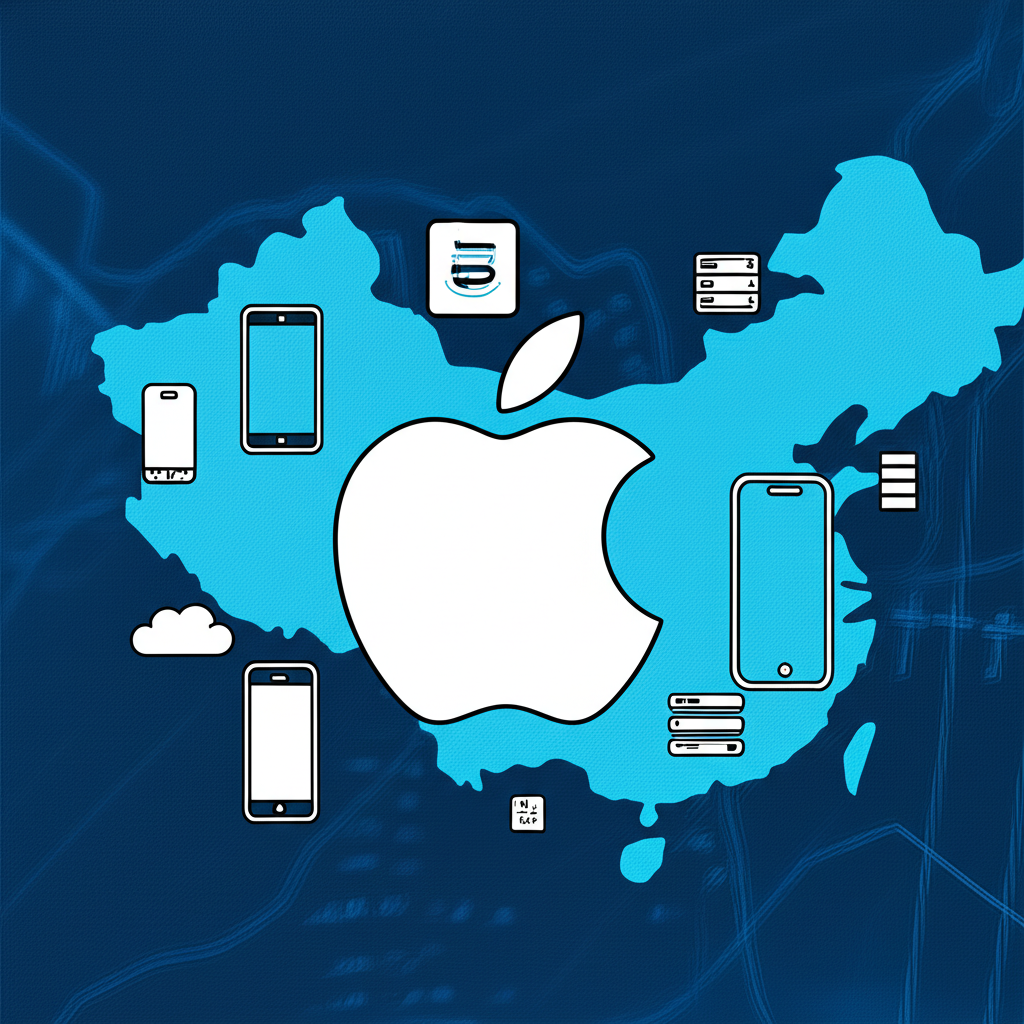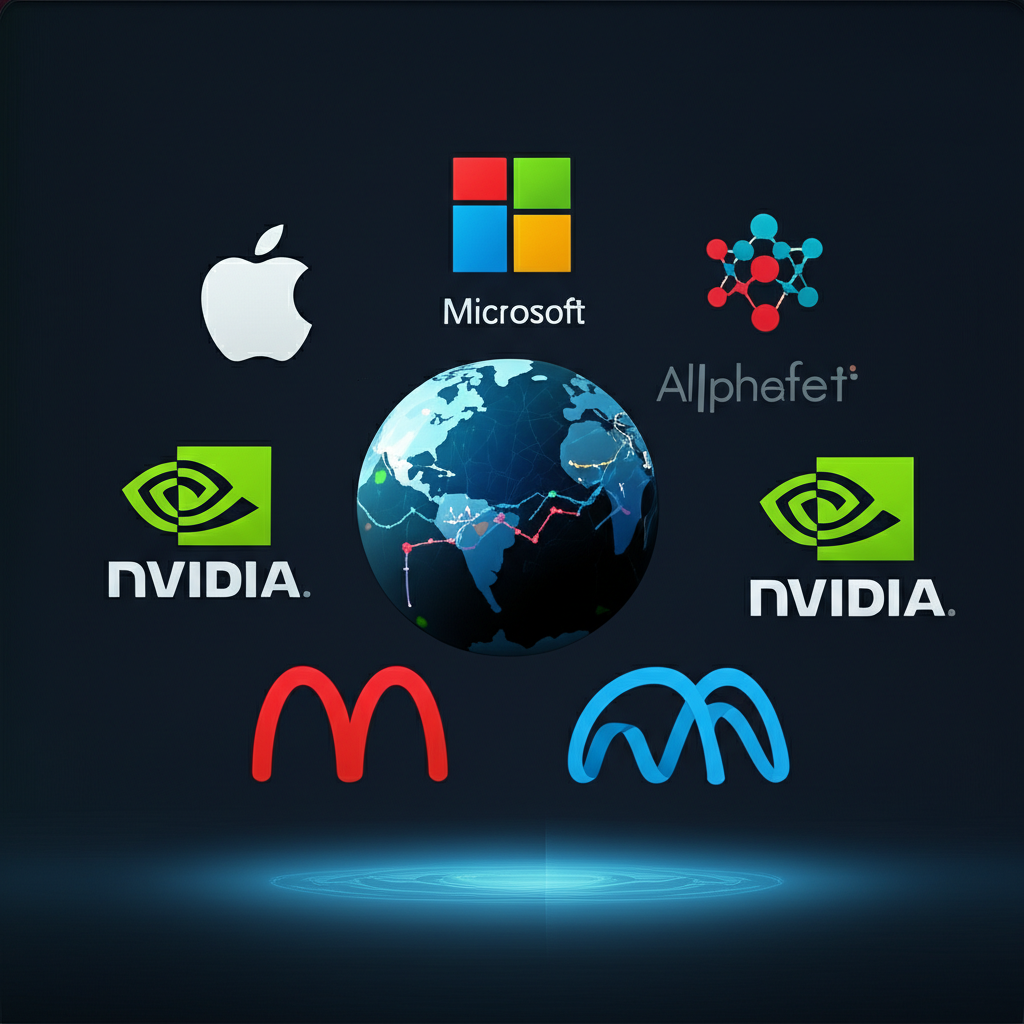Upcoming Magnificent 7 Earnings Dates & Schedules (Q[Current/Next] Earnings Season)
The financial world turns its attention to Silicon Valley every quarter as investors, analysts, and traders prepare for one of the most consequential periods in the market calendar: the earnings season for the Magnificent 7. This elite group—Apple, Microsoft, Alphabet, Amazon, Nvidia, Tesla, and Meta—has become synonymous with technological innovation and market-moving power. Their collective performance doesn’t just reflect the health of the tech sector; it often sets the tone for the entire stock market. As these companies report their latest financial results, markets worldwide react with heightened sensitivity, making their earnings announcements must-watch events.

While exact dates are subject to change, the typical earnings window follows a predictable rhythm. Third-quarter reports usually land in late October to early November, fourth-quarter results in late January to early February, first-quarter filings in late April to early May, and second-quarter disclosures in late July to early August. Below is a detailed overview of the anticipated release timelines and the critical metrics investors should monitor. It’s important to emphasize that these dates are projections based on historical patterns. For confirmed schedules, always refer to official investor relations pages or trusted financial news platforms.

| Company (Ticker) | Illustrative Earnings Date | Expected Time | Reporting Period | Key Metrics to Watch |
|---|---|---|---|---|
| Apple (AAPL) | Late October / Early November | After Market Close | Q4 Fiscal Year | iPhone Sales, Services Revenue, China Growth |
| Microsoft (MSFT) | Late October / Early November | After Market Close | Q1 Fiscal Year | Azure Cloud Growth, AI Integration, Office 365 Subscriptions |
| Alphabet (GOOGL/GOOG) | Late October / Early November | After Market Close | Q3 Calendar Year | Ad Revenue (Google Search, YouTube), Google Cloud Growth |
| Amazon (AMZN) | Late October / Early November | After Market Close | Q3 Calendar Year | AWS Revenue Growth, E-commerce Sales, Profit Margins |
| Nvidia (NVDA) | Mid to Late November | After Market Close | Q3 Fiscal Year | Data Center Revenue (AI Chips), Gaming GPU Sales, China Demand |
| Tesla (TSLA) | Mid to Late October | After Market Close | Q3 Calendar Year | Vehicle Deliveries, Automotive Margins, FSD Progress |
| Meta Platforms (META) | Late October | After Market Close | Q3 Calendar Year | Ad Revenue Growth, User Engagement (Facebook, Instagram), Reality Labs Losses |
Apple (AAPL) Earnings Outlook

Apple’s quarterly report is one of the most closely analyzed in corporate America. The spotlight shines brightest on iPhone sales—both unit volume and average selling price—which continue to drive a significant portion of revenue. However, the growth story increasingly revolves around the company’s high-margin Services segment, including the App Store, Apple Music, iCloud, and payment services. Investors also watch performance in China with particular intensity, as geopolitical tensions and shifting consumer sentiment can significantly impact sales. Any commentary on supply chain stability or product innovation cycles, such as new AI features in iOS or upcoming device launches, will shape market reaction.
Microsoft (MSFT) Earnings Outlook
Microsoft’s earnings narrative has evolved from productivity software dominance to cloud and artificial intelligence leadership. Azure remains a key barometer of enterprise IT spending, with its year-over-year growth rate scrutinized for signs of deceleration or acceleration. The integration of AI across Microsoft 365—through tools like Copilot—is now a central focus, as investors assess monetization potential and customer adoption. Strong performance in commercial bookings and cloud profitability often translates into positive stock momentum. With deep penetration in both enterprise and consumer markets, Microsoft’s ability to innovate while maintaining margins makes it a cornerstone holding for many portfolios.
Alphabet (GOOGL/GOOG) Earnings Outlook
At the heart of Alphabet’s business lies digital advertising, powered by Google Search and YouTube. Fluctuations in ad revenue serve as a real-time indicator of global economic confidence and consumer behavior. A rebound in advertiser spending after recent pullbacks has been a positive trend, but macroeconomic uncertainty could dampen future growth. Beyond ads, Google Cloud continues to expand, though it operates at a loss compared to AWS and Azure. Investors are eager to see progress toward profitability and competitive positioning in AI infrastructure. Any updates on AI-powered search enhancements or new monetization strategies for YouTube Shorts could influence long-term valuation.
Amazon (AMZN) Earnings Outlook
Amazon’s earnings reveal a dual-engine growth model. On one side, AWS remains a cash cow and a leader in cloud infrastructure, with investors tracking its revenue growth and operating margin. On the other, the e-commerce segment has undergone a transformation focused on cost discipline, advertising revenue, and supply chain efficiency. While retail margins have improved, the broader consumer environment—marked by inflation and shifting spending habits—remains a wildcard. The company’s ability to balance investment in innovation with shareholder returns will be critical. Expect commentary on fulfillment network optimization and international expansion to feature prominently in management’s discussion.
Nvidia (NVDA) Earnings Outlook
Nvidia has emerged as the linchpin of the AI revolution, and its earnings are treated as a proxy for global demand in high-performance computing. The Data Center segment, fueled by sales of its Hopper and Blackwell architecture GPUs, is the primary growth driver. Demand from hyperscalers, enterprises, and government agencies continues to outstrip supply, leading to extended lead times and pricing power. However, investors are alert to risks, including U.S. export controls on chip sales to China and increasing competition from custom silicon developed by cloud providers. As highlighted by Reuters, Nvidia’s guidance often shapes expectations across the semiconductor and data center industries, making its forecast one of the most influential in the market.
Tesla (TSLA) Earnings Outlook
Tesla’s financial reports are as much about technology and vision as they are about numbers. Vehicle deliveries and automotive gross margins are closely watched, but so is progress on Full Self-Driving (FSD) and the company’s broader autonomy roadmap. Pricing adjustments in key markets, production efficiency at new Gigafactories, and demand trends in China and Europe all influence profitability. With increased competition from legacy automakers and new EV startups, Tesla’s ability to maintain its innovation edge and brand loyalty is under pressure. Any updates on the Cybertruck ramp, Optimus robot, or energy storage growth could sway investor sentiment, even if near-term earnings are volatile.
Meta Platforms (META) Earnings Outlook
Meta’s resurgence has been powered by a strong advertising recovery and disciplined cost management. Ad revenue growth across Facebook, Instagram, and WhatsApp reflects healthy user engagement and effective targeting algorithms. Reels, the company’s short-form video platform, is now a significant contributor, though monetization still lags behind rivals. Meanwhile, Reality Labs—the division behind the metaverse initiative—continues to post substantial losses, funded by the profitability of the core business. Investors are watching for signs that VR/AR investments could yield long-term returns, while also evaluating how regulatory pressures and privacy changes impact ad performance. The balance between innovation and profitability remains a central theme.
Key Expectations & Analyst Consensus for the Current Quarter
Analyst forecasts for the Magnificent 7 reflect a mix of optimism and caution. AI-related growth, particularly at Nvidia and Microsoft, has lifted expectations for revenue and earnings per share. Cloud computing remains a reliable engine for Amazon and Alphabet, while advertising trends are closely tied to broader economic conditions. Apple’s services segment offers stability, but hardware sales are more cyclical. Tesla’s path is less predictable due to its exposure to consumer spending and aggressive pricing strategies. Overall, the consensus anticipates solid performance, but with growing scrutiny on forward guidance. Any deviation—positive or negative—can trigger outsized market reactions.
Market Impact: Why Mag 7 Earnings Move the Needle
The influence of the Magnificent 7 extends far beyond their balance sheets. Together, they account for a substantial portion of the S&P 500’s total market capitalization and an even larger share of the Nasdaq 100. This concentration means that their earnings outcomes directly affect index performance. A strong report from Nvidia can lift semiconductor stocks, while a miss at Apple might drag down consumer electronics and supply chain companies. Their results are interpreted as barometers of innovation, consumer confidence, and enterprise spending. In an era of index-driven investing, the performance of these seven names can dictate the direction of entire portfolios.
Volatility and Trading Opportunities
Earnings season for Big Tech is synonymous with volatility. Options markets surge in activity ahead of announcements, with traders deploying straddles and strangles to profit from anticipated price swings. The risk is real—post-earnings gaps of 5% or more are not uncommon, especially for high-growth names like Tesla and Nvidia. Short-term traders may capitalize on momentum, while long-term investors use dips as entry points if fundamentals remain intact. Risk management is essential, as sentiment can shift rapidly based on a single sentence from a CEO during the earnings call. Understanding implied volatility and liquidity conditions can make the difference between opportunity and loss.
Historical Performance & Trends: A Look Back
Over the past few years, the Magnificent 7 have consistently outperformed analyst estimates, reinforcing their reputation as market leaders. Nvidia’s explosive revenue growth, driven by AI chip demand, has been a standout, while Microsoft and Amazon have delivered steady cloud gains. Apple’s services revenue has grown into a multi-billion-dollar business, reducing reliance on iPhone cycles. Meta’s turnaround in ad revenue after 2022’s downturn demonstrated resilience, and Tesla has maintained leadership in EV deliveries despite margin compression. This track record of beating expectations has fueled their rising market caps and attracted sustained institutional interest. As S&P Global Market Intelligence has documented, their dominance raises important questions about market concentration and systemic risk.

Beyond the Numbers: The Broader Significance of Mag 7 Earnings
The quarterly reports of these tech titans offer more than financial metrics—they provide a window into the future of technology and the global economy. Their investments in AI, cloud infrastructure, and digital platforms shape how businesses operate and how consumers interact. When Nvidia reports surging data center sales, it signals increased enterprise adoption of AI. When Meta sees higher ad engagement, it reflects shifting digital consumption patterns. These companies are not just corporations; they are modern-day infrastructure providers. Their earnings outcomes influence venture capital trends, startup valuations, and even government policy on technology and competition.
Divergence Within the Magnificent 7
While grouped together, the Magnificent 7 are on distinctly different trajectories. Nvidia and Microsoft are riding the AI wave with accelerating growth, while Apple and Alphabet face headwinds from slower consumer spending and ad budget constraints. Amazon balances retail pressures with cloud strength, Tesla navigates a maturing EV market, and Meta bets big on the metaverse despite ongoing losses. Regulatory scrutiny varies—Apple faces antitrust challenges, while Meta deals with data privacy concerns. Each company’s unique exposure to market forces, innovation cycles, and global risks means that their performance will increasingly diverge. Recognizing these differences is crucial for building a nuanced investment strategy.
Investor Strategies for Magnificent 7 Earnings Season
Navigating earnings season requires more than just tracking EPS and revenue. Smart investors focus on forward-looking indicators: management’s guidance, capital allocation plans, and commentary on macroeconomic conditions. Conference calls often reveal more than the press release—tone, confidence, and strategic emphasis can signal shifts before they appear in the numbers. Short-term traders may position for volatility, while long-term holders assess whether the company remains aligned with their thesis. Diversification is still key; even within this elite group, concentration risk is real. Using earnings as a checkpoint for portfolio review—not just reaction—can lead to more disciplined decision-making.
Conclusion: What Lies Ahead for the Magnificent 7
The Magnificent 7 earnings dates are pivotal moments in the financial calendar, offering insights that ripple across markets, sectors, and geographies. These companies are not just reporting profits—they’re shaping the future of technology, commerce, and communication. Their ability to innovate, adapt, and scale will continue to influence investor sentiment and market structure. As AI, cloud computing, and digital transformation accelerate, monitoring their financial reports, strategic direction, and competitive positioning will remain essential for anyone navigating the modern investment landscape. Their dominance may evolve, but their impact is unlikely to diminish.
What are the upcoming Magnificent 7 earnings dates for the current quarter?
The specific dates vary by company and quarter, but they generally fall within a few weeks of each other. For example, Q3 earnings typically happen in late October/early November, and Q4 earnings in late January/early February. Investors should consult official company investor relations websites or reputable financial news outlets for the most up-to-date and confirmed dates for Apple, Microsoft, Alphabet, Amazon, Nvidia, Tesla, and Meta.
Which Magnificent 7 companies are expected to beat earnings estimates this season?
Analyst predictions for beating earnings estimates are dynamic and change frequently. Companies with strong growth drivers, like Nvidia in AI or Microsoft’s Azure cloud, often have high expectations. However, macroeconomic factors can influence even these giants. It’s essential to review the latest analyst consensus from financial firms leading up to each earnings report.
How do Magnificent 7 earnings impact the broader stock market, like the Nasdaq 100?
Due to their massive market capitalization, the Magnificent 7 companies have an outsized influence on major indices. A positive surprise from one or more can lift the entire market, particularly the tech-heavy Nasdaq 100 and the S&P 500. Conversely, an earnings miss or weak future guidance can trigger a broader market downturn, affecting investor sentiment across various sectors.
What are the key metrics to watch during Apple’s and Microsoft’s earnings calls?
- Apple: iPhone sales (volume and average selling price), Services revenue growth, gross margins, and performance in key international markets like China.
- Microsoft: Azure cloud revenue growth, intelligent cloud segment profitability, commercial bookings, and the impact of AI integrations across its software offerings.
Is Tesla expected to show growth in deliveries and profitability in its next earnings report?
Expectations for Tesla’s deliveries and profitability are closely tied to its production capacity, pricing strategies, and global demand for EVs. Analysts will scrutinize automotive gross margins, free cash flow, and any updates on new models or factory expansions. Tesla earnings can be highly volatile due to market sentiment and company-specific news.
How can investors prepare for the volatility around Nvidia’s earnings announcements?
Nvidia’s earnings often lead to significant volatility due to its central role in AI. Investors can prepare by:
- Reviewing analyst consensus and management’s future guidance carefully.
- Understanding the potential impact of data center and gaming chip demand.
- Considering options strategies like straddles or strangles if comfortable with higher risk.
- For long-term investors, focusing on the underlying growth outlook rather than short-term price swings.
What are analysts predicting for Amazon’s AWS growth and Meta’s ad revenue this quarter?
For Amazon, analysts typically expect strong, consistent growth from AWS, though the growth rate is closely watched for any deceleration. For Meta, predictions hinge on the health of the digital advertising market, user engagement across its platforms (Facebook, Instagram), and the ongoing monetization of Reels. Both companies’ quarterly results are sensitive to macro-economic conditions affecting consumer and business spending.
Are there any significant risks or opportunities highlighted by recent Magnificent 7 earnings reports?
Recent earnings have highlighted opportunities in AI (Nvidia, Microsoft), cloud expansion (Amazon, Microsoft, Alphabet), and a rebound in digital advertising (Meta, Alphabet). Risks include regulatory scrutiny, geopolitical tensions, supply chain disruptions, and the impact of inflation or interest rates on consumer spending. The concentration of market value in these tech stocks also presents a systemic risk if several underperform simultaneously.
What is the historical trend of Magnificent 7 companies meeting or exceeding earnings expectations?
Historically, the Magnificent 7 companies have a strong track record of meeting or exceeding analyst consensus for EPS and revenue, contributing to their dominant market cap. This consistent outperformance is a key reason for their designation as “magnificent.” However, past performance is not indicative of future results, and each earnings season presents new challenges and opportunities.
Beyond the Mag 7, how should investors interpret broader earnings predictions for tech companies?
Beyond the Mag 7, investors should look for similar themes: growth outlook in specific tech sub-sectors (e.g., cybersecurity, software services), the impact of AI adoption, and profitability trends. Smaller tech companies might be more sensitive to changes in economic conditions or specific market niches. It’s crucial to understand their competitive position, cash flow, and future guidance relative to their specific industry segment. General earnings season insights often cascade from the performance of the largest players.

留言